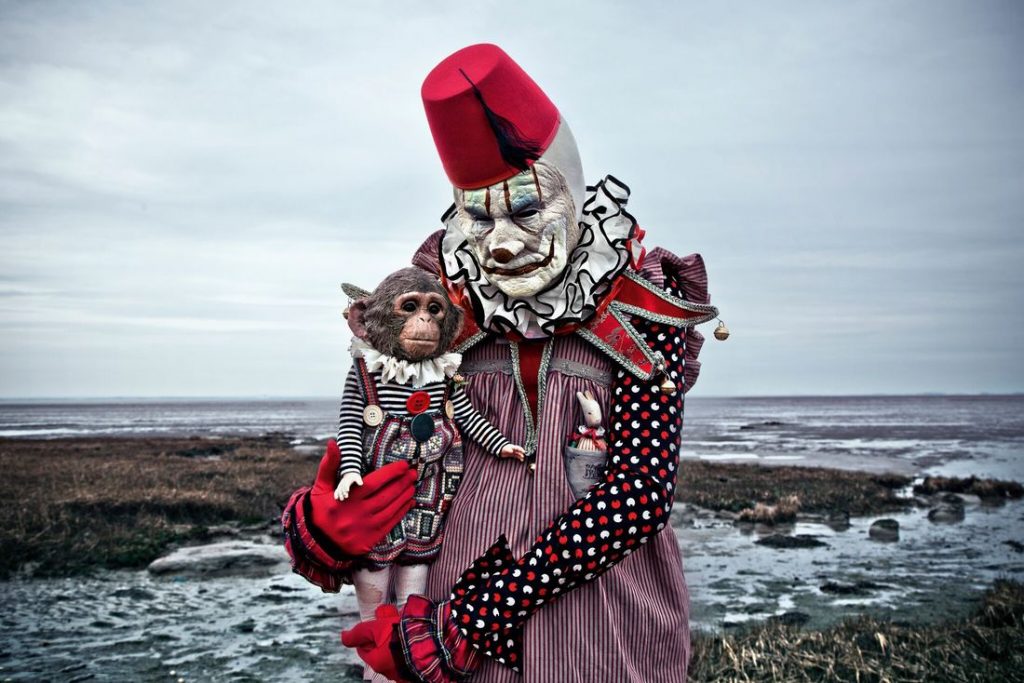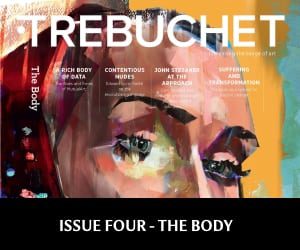[dropcap style=”font-size:100px; color:#992211;”]M[/dropcap]othmeister are a creative duo from Belgium whose work in costumery and masks has won them fans from around the world. Performative dreams and deep play with the unconscious form part of the modus operandi of the group.
Strange locations, unconventional or forgotten exhibition spaces are all backdrops for their expositional works. Born out of a desire to lampoon the seeming perfection of individuals’ presentation of themselves on social media, the work has taken on a life of its own, reaching a wider audience of people who similarly wish to play with the portrayal of the social self. By no means a new concept, however, with high production values and a sense of humour Mothmeister have gained something of a cult following, ironically developing a creative community against the grain of the colonised spaces of the online world.
Reminiscent of the Chapman brothers, the intentions behind the work are sound and the process profound. Our consumption of it may be easy but the large messages resonate. Given Mothmeister’s premise of social constructs, Trebuchet asked them how they see the body:
‘We’ve always considered our body like a canvas to express ourselves: a toy one can fool around with, and alter non-stop. Hence our eternally shifting Mothmeister creatures. But obviously there’s a wider range of alter egos out there which we think makes our body even more fascinating.
Mothmeister: We try and keep things (from our personal lives and Mothmeister) separate; we are two separate people but Mothmeister is the brand, if you will, which is the two of us and we really are like Siamese twins. One of us models while the other one is the photographer, though we make the clothes together. It’s more or less an organic process which begins again with each project. It could be a mask, it could be taxidermy; we just let our thoughts float and it all happens very associatively. It grows… We don’t think too much about it, but it’s more about a feeling or emotions that suddenly create an image, and we never sketch out things. Things emerge.
Our real face is only one possible way to look at the world. We like to explore the other you. Your body gives you the space and tools to do so. It’s like a play garden. We like this idea of hitch-hiking our body to another place. Our challenge is to reinvent the body. And, given the masks we wear, to make sure there’s enough oxygen for our brains to operate, because the one who wears the masks often suffers from severe asthma and claustrophobia, which doesn’t really help.
Because most of our work consists of portraits, we mainly use what’s generally considered the most expressive part of the body: the head. But paradoxically we hide our real face behind a fake facade, giving it more expression on another level. This juxtaposition is something that’s always present in our work: the living body wears lifeless (death) masks and the accompanying dead taxidermy animals are dressed up, appearing more alive. It’s a reference to the Victorian post-mortem photo shoots, where the living family often looked more like blurry ghosts (because of their movement during the long exposure times) than the deceased, who was often dressed and made-up as if he was still alive.
There are a lot of clowns in our work and in that respect it’s quite archetypical, but we’ve tweaked it to make it our own;again these things happen quite organically. We go with the flow or emotions, whatever brings out the emotion. We do like travelling and isolated landscapes, especially landscapes where nobody likes to go on holiday. That evokes things for us in our imaginations.
In what way do you feel you’ve pushed your conception and application of the body?
Mothmeister has been out there for four years now. Squeezing yourself into hundreds of suffocating masks and costumes is one thing. But…
Read this article in full in Trebuchet 4 – The Body

The aim of art is to represent not the outward appearance of things, but their inward significance. – Aristotle





















